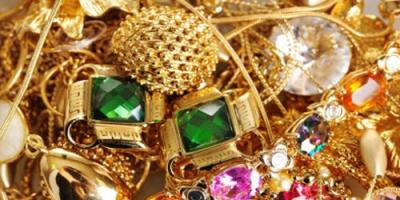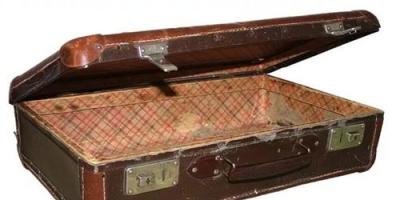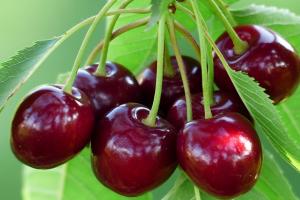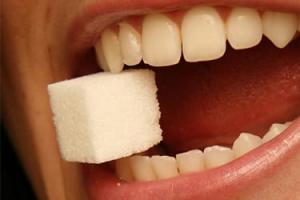Konika spruce belongs to decorative appearance oil. It also has other names: gray conic spruce, white spruce and glauka spruce. This tree has become popular during the New Year holidays. After all, after the celebration you won’t have to throw it away like garbage, but on the contrary, give it a second life for garden plot. However, this homemade Christmas tree has some requirements for care at home.
Rules of care
IN Lately The indoor Christmas tree in a pot has become very popular. How to care for it at home should be discussed in detail. The first thing to do is choose a location. A cool corner of the house, away from radiators and other heat sources, is suitable.
Plant prefers partial shade, so there is no need to place it near the window. Conifers love high humidity. Therefore, it is necessary to place a vessel with water next to the spruce. Spraying from a spray bottle will also have a beneficial effect on her condition. But moderate watering is required. It is important to ensure that there is not only drying out, but also waterlogging. The optimal frequency of watering a potted Christmas tree is watering twice a week.
In the case of spontaneous intensive growth, the root system will weaken, because in this case the roots have nowhere to develop. As a result, the tree will weaken and lose its presentation. This occurs due to increased temperature. Room conditions can simulate the arrival of spring and the plant will begin to awaken. To avoid such embarrassment, you need to immediately move the dwarf tree to a cool place. And if this is not possible, ventilate the room as often as possible by introducing cold air.
Basically, the konika tree stays in the house for about 3 months. Then it begins to wither, the conifer needles fall off, after which the death of the plant occurs. To prevent this from happening, you need to spray the plant regularly several times a day and make sure the air is cool. Sometimes, especially in small apartments, it is very inconvenient and impossible to care for a Christmas tree in a pot. Therefore, if possible, after a month, you need to send the decorative spruce to the balcony. But at the same time you need to make sure that the soil does not freeze. It can be insulated with straw or other materials.
When taking the tree out into the cold, you must It is good to moisten the soil in the pot, but do not flood it. If the decorative Christmas tree in a pot is very small, then it needs to be covered plastic bottle. To do this, the bottom is cut off and several small holes are made for air exchange. The most important thing when placing a plant on a balcony or on a cold windowsill is to prevent ultraviolet radiation from reaching it.
When pruning a coniferous tree, you should adhere to the natural shape of the crown, while shortening only very long bare branches. Such pruning will stimulate branching, as a result the tree will grow beautiful and lush. You need to cut right after the joint, from which new branches will grow.
Under no circumstances should a weakened or diseased plant be pruned, otherwise after such stress it may not recover at all and will dry out. The branches are shortened strictly to green needles, because woody areas will not produce new shoots.
Features of transplantation
 Planting is done in early spring, as soon as it becomes possible to work with the soil with a shovel. In this case, the Christmas tree must be removed from the pot and the entire substrate shaken off from its roots. Only after this is the plant planted in new soil.
Planting is done in early spring, as soon as it becomes possible to work with the soil with a shovel. In this case, the Christmas tree must be removed from the pot and the entire substrate shaken off from its roots. Only after this is the plant planted in new soil.
Usually it takes root in fresh soil for quite a long time: after about 3 months, the roots adapt to open ground and the plant takes root. In order for the Christmas tree to take root better, it is planted in partial shade. And if there is no shaded place, cover it with gauze or other thin cloth.
The first week the ephedra needs plenty of watering. This will make it easier for him to adapt to new conditions. Do not be alarmed if, after transplantation, the ephedra sheds some of its needles and looks dull. This is a normal reaction to adaptation to new conditions, and at first the tips of the branches may begin to dry out. Having taken root and been saturated with favorable air humidity, it will be transformed and look like new.
The Christmas tree should be transplanted into the garden plot as early as possible. This is usually done with the first winter thaw, after the ground has thawed a little. If it is impossible to plant the plant on permanent place V open ground it is recommended to bury it directly with the pot for some period of time. You can simply place a pot with a Christmas tree outside directly in the snow.
It is important that it is not exposed to direct sunlight. Watering should continue as usual.
Coniferous species
 The most popular is the Canadian conika spruce. It is very decorative - always rich green. Most often it is chosen as a New Year's decorative tree.
The most popular is the Canadian conika spruce. It is very decorative - always rich green. Most often it is chosen as a New Year's decorative tree.
External data:
- correct cone shape;
- juicy, thick needles;
- Wide range of heights and diameters.
If you comply proper care, this spruce will easily take root in the garden in the future. It grows well and is not picky about winter conditions in open ground. Only the spring sun can harm the plant. Therefore, the main thing in planting this plant is choosing a shady place.
Main varieties of conifers:
- Norman fir or Caucasian fir;
- Siberian fir;
- Siberian spruce;
- cypress;
- hemlocks and pseudo-hemlocks.
Norman fir came to us from Denmark. This is a very beautiful coniferous plant, unfortunately, not winter-hardy. Therefore, grow fir in middle lane It is inappropriate for Russia. In practice, it can still overwinter in the open ground a couple of times, but only if the winters are warm. Often the plant is sold quite tall, but its pot seems too small for its size. Usually this indicates that its roots have been cut off and the conifer is destined to exist only during the New Year holidays. After which he will die.
One of key points the viability of coniferous plants is complete root system. Any damage to the roots will cause colossal damage to the plant. Therefore, buying such a plant is too risky.
On the market, fir in a pot looks quite healthy due to the fact that it was grown using various growth stimulants in order to quickly obtain a large specimen and reduce costs. When buying this version of a Christmas tree, you should keep in mind that, in fact, it is the same felled tree, only in a pot. But she will live about the same. Therefore, if you have a strong desire to purchase Norman fir, you need to understand this point, so as not to be upset later by the fact that it did not take root in the open ground.
And here Siberian fir It is quite capable of living in outdoor conditions; it has high winter hardiness. Another option could be Siberian spruce, which treats winter just as calmly. These shiny needles have a beautiful whitish tint. By the way, Siberian spruce is not capricious towards the sunny side. The only exception is the moment of landing, which assumes the absence of intense direct hits sun rays.
One of the favorite options for decorative coniferous plants in a pot is thuja. It cleanses the air in the room well, filling it with a pleasant aroma. And it is not at all picky about the composition of the soil, so it is the easiest to grow without any problems.
Exists special indoor view cypress. The plant can live in a pot permanently. But when it warms up, you need to take it outside. The cypress tree will be glad to the absent-minded sunlight, moderate watering and high humidity.
Hemlocks and pseudohemlocks have slow growth. They are usually sold in sizes 50-80 cm in length. There are many types of hemlock, so you should select one with frost resistance for your region.
Plant selection
It is important to understand that if you purchase a konica spruce, it simply needs care at home. It is its completeness and correctness that will guarantee the survival of the plant in the future.

However, the most important thing when buying a decorative Christmas tree is pay attention to its roots. The duration of her life depends on them. If the purchased plant does not fit well in the pot due to long roots, under no circumstances should they be trimmed. The needles should be transplanted into a larger pot or, if weather permits, into open ground.
And before you pay, you need to ask the seller to remove the plant from the pot to make sure the integrity of the root system. If he refuses to show the tree, then most likely its roots have been cut to fit into a standard pot.
Evergreens conifers look presentable and in summer heat, and in the winter cold, so owners of suburban areas always try to purchase them. Spruce Canadian Konica- a favorite conifer, which has become popular due to its dwarf forms and fluffy branches. This long-liver can grow in one place for up to half a century, so even great-grandchildren will have time to admire its beauty and solidity.
The miniature tree is valued for its beautiful cone-shaped crown, which does not require additional shaping. If you look at photos in catalogs, you can clearly see what a colorful look a Christmas tree creates in the garden at any time of the year. It combines with many plants, but also looks decent alone.
Konica is a form of Canadian spruce that arose due to a natural mutation in nature. This species was discovered in Canada at the beginning of the 20th century, from where it spread to Europe and became the main decoration of household plots. In gardening there are other names for this species:
From the description given, without looking at the photo, we can conclude that the listed conifers have an unusual color of needles and a presentable crown.
Miniature Konica reaches a maximum height of 2.5 m. On average, a Christmas tree grows by 1 m. The diameter of the tree can reach 2 m, but usually takes no more than 80 cm. The crown is formed perfectly evenly, which means the gardener does not have to prune every year. The tree has a narrow, elongated shape resembling a cone. The height and decorativeness of the crown are the main properties for which it is valued.

Ephedra is characterized by slow growth, especially at the beginning of cultivation. In the first 10 years it grows by a maximum of 6-10 cm per year. Further growth proceeds even more slowly: the tree adds 1.5-3 cm in height every year. Cones rarely appear on the tree. They have a regular elongated cone shape, their length is 6 cm.
Konica does not tolerate polluted air. In an unfavorable atmosphere, it can wither, so it is rarely grown in urban areas.
There are a number of reasons why you should choose Canadian conifer for landscaping:
- There will always be on site beautiful design, and the gardener will not have to make much effort.
- The coniferous plant releases aromatic substances, phytoncides, into the air, which clean it and get rid of harmful microorganisms.
- The plant is disease resistant.
- The needles have an unusual green-blue tint, and their length reaches 1 cm.
- The root system is superficial, which means the plant can be easily replanted if necessary.
- Propagates well both from cuttings and seeds.
Ideas for landscape design: combination with other plants
Conifers fit into almost any landscape composition, Canadian spruce is no exception to the list. It looks good in an ensemble with other conifers - thuja, pine, of which there are so many varieties. Neighborhood with deciduous and cereal plants is also considered successful. The discreet shade of pine favorably emphasizes flowering shrubs.
Christmas trees of this type grow well in a group; they can be used to create hedge. The branches are dense, densely covered with needles, ideal for creating a good screen from curious neighbors. Placement near a children's playground or gazebo is considered beautiful. It not only decorates the area, but also purifies the air around. The Christmas tree can be used to create compositions on rocky areas. Even if you plant one tree on the lawn, it will adequately decorate the area.
From planting to future wintering
If conika spruce is chosen for landscaping the area, you need to know the following about planting and care:

For the first 3-4 years, it is recommended to keep the seedling at home or in a greenhouse. You can plant in open ground at any time of the year, except winter. If the transplant is done in the summer, then a lump of earth is left on the roots. It will protect the fragile root system from the heat. Can be removed from the roots in spring or autumn old land, but this is not necessary. Best time for planting in open ground - this is April or August. It is at this time that it is celebrated active growth tree, which means it will quickly take root.
Planted in cool but not wet weather, the tree will take root within a week.
For landing, first prepare landing hole slightly wider than a seedling. A drainage layer of crushed stone is poured onto the bottom and broken bricks. Prepare a soil mixture: sand, peat, leaf and turf soil in equal proportions. Part of the mixture is poured onto the drainage layer. You can add a little complex fertilizer. Now the seedling is placed in a hole, covered with the remaining soil, lightly compacted. After planting, each seedling requires 10 liters of water. To retain moisture, the ground around the trunk is covered with mulch.

How to take care of a miniature Christmas tree at home and on the property?
Growing spruce is conventionally divided into 2 stages: at home (in a greenhouse) and in open ground. In order for the seedling to become stronger in the first years, it is kept in a cool room in the summer up to +10°C degrees, and in the winter down to -10°C. Watering is carried out as the top layer of soil dries. In warm weather, spraying the crown with water from a spray bottle is allowed.
Knowing how to care for the Canadian conifer on your site, you don’t have to worry about its decorativeness. Agricultural technology is as follows:
- Moderate watering is required. In the warm season, 10 liters per tree 2 times a week is enough.
- Sprinkling twice a week will be useful. A watering can or hose is used. In this case, there is no need to make a swamp in the root circle; excess moisture is harmful to the roots.
- Sometimes it is necessary to loosen the soil around the trunk to ensure the flow of oxygen to the roots. This is done extremely carefully, since the roots are located close to the surface.
- After loosening, mulching is done with peat and compost.
Dwarf Konika spruce trees require fertilizer during their growth period at home. Special complexes for conifers are suitable. If minerals were added during planting complex fertilizers, then they will last for several years. Spruce trees are also suitable organic fertilizers. Once per season, 5 kg of rotted manure can be added to the soil.

In winter, Christmas trees growing in the garden must be protected from frost. To do this, the trees are wrapped in burlap and tied up. The lower part of the trunk must remain open, otherwise the process of debate will begin. Shelter is needed more to protect against the first spring sun than from the cold. Canadian Christmas trees are frost-resistant representatives. The roots of young and immature seedlings can be protected from freezing with mulch. Adult specimens do not need shelter.
The pruning procedure is only necessary if the branches are burnt or dry. They can be safely deleted. The spruce grows well, and with the onset of spring, young branches will certainly appear. To stimulate their growth, you need to slightly increase watering.
Canadian blue spruce lends itself successful cultivation on private lands for about a hundred years. Decorative and healthy tree Even a novice gardener can grow unusual needles. You just need to start correctly: plant in appropriate place. Rules further care behind a coniferous dwarf they are not difficult.
Many have seen these little ones lush beauties in stores, especially before the New Year holidays. "Glauka Konika" is sold very small, often reaching a height of only 30-40 cm. But with proper maintenance and care, such little ones can grow into a spectacular plant up to 3-4 meters.
The main suppliers of these small fir trees are Holland, Poland and Denmark. At its core, the gray spruce “Glauka Konika” is just a dwarf hybrid of ordinary gray spruce, resulting from a mutation. Spruce trees are practically not intended for cultivation, since they require a period of hibernation and low temperatures. Therefore, all small spruces grown in pots are intended mainly for temporary use.
In open ground, this tree reaches its maximum height only at the age of 50-60 years. It grows very slowly. In the first ten years, the annual increase in height is no more than 3-4 cm. After that, even less - from 1.5 to 3 cm per year. Average duration is 300-500 years.
Caring for a plant at home

Caring for the Glauka Konika spruce is not difficult. If you purchased a very small blue-gray beauty in winter and want it to survive until it is transplanted into open ground, be prepared to devote a lot of time to it.
Keep the spruce in for a long time home potty- a real crime.
If such a little beauty has lived to see it, it is recommended to transplant it into open ground. This can be done from spring to autumn.
Transfer
Having brought home a spruce, it is first recommended to carefully inspect it. Since plants cannot be transported across the border in the ground, instead of soil, coconut fiber or sterilized peat is poured into the pots. But such a substrate is not suitable for spruce. The optimal solution would be to choose fertile soil. However, there is a nuance here.
If the spruce is dormant, then it is better to wait a little until spring and provide it with low temperatures. If it has already “woke up” and is putting out green needles, then you can’t delay replanting.
The normal reaction after transplantation is the shedding of needles. To help relieve stress, it is enough to maintain the temperature within 10 degrees and provide humidity.
Conditions in the house
Find the coldest place in the house: a window with a sill on the north side, glass balcony or veranda.
The decorative Konika is unusually beautiful - a dwarf form of the gray Canadian spruce. Precisely attractive appearance opened the doors to this little beauty into the world of gardening, where she was joyfully and unconditionally accepted. Today this mini-Christmas tree decorates various corners of the Earth.
It also grows well in the middle zone of our country. Distinguished by its winter hardiness, Canadian spruce Konica can grow wherever ordinary spruce trees grow. And its small growth turned out to be a great advantage, allowing the tree to settle even in a small area.
Description of Canadian spruce Konica
Konica is a decorative form. At favorable conditions the height can be up to 3 m, but more often it grows up to 1 m.
The crown is narrow-cone-shaped, dense. The needles are bluish-green, soft, thin and short. The root system of Konica is represented by a compact, weakly expressed taproot. The predominant part of the roots is located quite close to the soil surface, so loosening must be careful.
This tree grows very slowly - only 3-4 cm per year. But some specimens can still gain up to 10 cm in height per year. At the age of five, the height of the Christmas tree reaches only 20 cm, but already at this age it differs in decorativeness from the same-age seedlings of common spruce. By the age of 10, the Christmas tree grows up to 80 cm. Good growth is maintained until 10-15 years, when the height of the plant is about 1 m. Subsequently, the intensity of growth decreases and amounts to only 2-3 cm per year. This increase will continue into old age. By the age of 20, the height is 150 cm, the crown in diameter at the base is about a meter.
Canadian spruce Konica Maygold is a variety of gray spruce characterized by yellow growths. In other characteristics, the variety is similar to Konica and Daisy White.
How to care for Canadian Konica spruce
This variety of spruce is convenient because its care is minimal. Konika does not need crown care - it does not need pruning. Natural soil fertility and natural precipitation are sufficient. But if the Canadian Konica spruce grows on the site, it still needs to be cared for, even minimally. This will only enhance its decorative properties.
In case of excessive drought, irrigation through the crown is useful. 1-2 days after this, it is advisable to shallowly loosen the soil under the tree. With the arrival of summer, you need to feed the spruce. To do this, you can add 5 kg of rotted organic matter to the root zone and mix it with the soil. With the arrival of October, it is recommended to mulch with a layer of peat compost 5 cm thick.
This way the plant will overwinter better. In early spring mulch is incorporated into the soil. To prevent spring browning (burning in the sun), Christmas trees should be wrapped in burlap or some other material that will protect from the sun without affecting ventilation.
Spring browning of needles is not a disease. This is just the plant's reaction to spring solar activity against the backdrop of frozen soil. In other words, the tree begins its seasonal growing season, and the unmelted soil is not yet able to provide the roots with the necessary nutrition, so the needles begin to turn brown. But when the sap begins to flow and when there is sufficient nutrition, the color of the needles tends to be restored.
Planting Canadian spruce Konika
Canadian spruce can be replanted throughout the growing season. Konica, the planting of which is not so difficult, still requires compliance with certain requirements. So, at the beginning of spring and at autumn period Transplantation with an open root system is optimal.
In summer, it is recommended to transfer the plant on its roots with a lump of earth. It is better to do this in cloudy weather. For 2 weeks after planting, the Christmas tree needs to be protected from direct sunlight and the soil maintained at an optimal moisture level. Transplantation is better tolerated at a young age.
Application of Konica
Canadian spruce Sonica is very popular in landscape design. She is good both in solo performance on the lawn and in a group. Due to its slow growth, it is practically not used in flower beds, but when it reaches a certain height, the tree looks great in mixborders.
Canadian spruce dwarf Konica effective in a variety of compositions. It can very often be found in containers on the roof (“green” roof), terraces, near houses, and when decorating gardens. Decorative form good in large rock gardens. Looks great in the background flower arrangements, and also harmoniously combines with other low-growing conifers. Konika looks especially beautiful on a smooth, trimmed lawn.
Canadian spruce Konica in a pot in the photo
Growing spruce in a pot is not at all difficult, as long as you know the technology. To start a “homemade” Christmas tree, you can buy a ready-made one in a store, you can grow it from seeds or dig up a seedling in the forest. Whatever method is chosen, the seedling must be very carefully transplanted into a container. It is important to ensure that the root collar of the plant remains at ground level. The root system must not be allowed to dry out. By the way, a Christmas tree bought in a store needs to be replaced with soil.

For all types of spruce, the soil should have the following recommended composition: leaf soil, turf soil, sand, peat in a ratio of 2:2:1:1. It is advisable to lay drainage (gravel, coarse sand, expanded clay) in a layer of 10 cm at the bottom of the container or pot. When planting/transplanting, it is advisable to apply fertilizer at the rate of 100 g/m2. General fertilizing is applied at the rate of 15-20 g per container 2 times per season.
Although spruce trees are shade-tolerant, an optimal light regime is still recommended. Spruce in winter gray Konika requires sufficient humidity (80-90%) and optimal temperature+5-15 °C. The tree does not tolerate dry soil well, but waterlogging is not recommended. To maintain an optimal level of humidity, you can mulch with peat, the layer of which will be 5-6 cm. Periodically it is mixed with soil, and new mulch is added on top. Canadian dwarf spruce Konica grows slowly and does not need pruning, you can only remove diseased and dry branches.
In summer, it is better to place the pot or container under trees or shrubs. Drip irrigation is recommended. Every year the Christmas tree needs to be replanted in a pot. bigger size and special compost.
The advantage of dwarf forms is that, under favorable conditions, they can live for a long time in pots and containers. An ordinary spruce in a container can live no more than 3-4 years.
Konika in a pot for the New Year
Today it is considered very fashionable to have a potted plant as a New Year's tree.
For such a New Year's tree, you need to choose a place away from radiators and other heat sources. It is best to place the pot on a cold window, but given the “New Year’s” purpose, this is not always possible. In addition, a south window is not an option, since the young plant is afraid of direct sunlight. Wherever the pot stands, it is necessary to periodically turn it in relation to the light.
When keeping Konica in a heated room, it is necessary to spray the crown. It would be better to try to increase the air humidity near the tree itself. To do this, you can place containers of water around the pot. Another way to increase humidity: place the edge of a towel in a container with water, and hang the other edge on the radiator. With this method, you will have to constantly add water, as the water will evaporate quickly.
It is simply impossible to create a high-quality harmonious space on a selected plot of land without correct selection garden plants. Dwarf plants are of particular importance in landscape design. coniferous trees, which are used for a wide variety of purposes and can act as individual element design of a plot of land, as a living fence, and so on. Spruce in landscape design has long conquered significant place, and all thanks to the ability of this plant to remain attractively green throughout the year, as well as its ease of care.
The small growth of the dwarf spruce allows this tree to be planted in both large and small areas.
Until recently, the most common spruce trees were used in landscape design, which, for their long life could reach a height of more than 25 m. However, after a spruce species with a mutated growth gene was discovered in Canada, the height of which does not exceed 4 m, the dwarf species took over their place from their huge relatives
There are some requirements for planting dwarf spruce. Before planting, the soil must be fertilized by adding 8-15 kg of humus per 1 m². By digging up the surface layer of soil and adding humus. In addition, phosphorus and nitrogen fertilizers need to be applied. If the soil at the planting site is sandy, it is necessary to dilute it by adding part of the fertile turf soil. The spruce is planted 35-40 cm deep, so that not only the roots, but also part of the trunk are in the ground.

Canadian spruce fits perfectly into the design of a dry garden stream.
In addition, you need to drive a peg next to the trunk and tie the tree so that the tree has support until the root system gets stronger. After planting, the conika spruce may wither a little; in this case, you should not immediately cut off the faded branches. As a rule, withering of branches occurs when the roots are damaged, which happens quite often when replanting a tree, but not everything is so bad. With abundant watering, the tree will again begin to please the eye with its bluish greenery.
So, to plant fir trees you will need a conic following materials and tools:
- cutting shovel;
- hammer;
- wooden stakes;
- string or twine;
- humus;
- nitrogen and phosphorus fertilizers.
Dwarf spruce can also grow in a shaded area. The main thing is that the soil is rich in nutrients. Young trees are planted in spring or autumn. Konik spruce is quite unpretentious, but it is still advisable to water in especially dry months, since this tree comes from places where the soil remains frozen throughout the year; its root system does not reach more than 2 m in depth, which means it can draw water from deep layers of the earth will not be able to.
Despite the frost resistance and excellent tolerance of windy winters, owners of such plants will still sometimes have to cover the trees with burlap on sunny days to protect the trees from sunburn.
If the conic grows in a shaded place, special care there is no need for a Christmas tree.
Return to contents
Ways to use Konik spruce trees in landscape design

Dwarf spruce does not require care or pruning of branches - high-quality soil and natural precipitation are sufficient.
Many designers have recently begun to use these small trees for a variety of purposes. Decorative dwarf spruce received the name “konik” due to its conical shape; it has a number of important qualities that made it so popular for arranging garden plots. Firstly, it is worth noting that this type of spruce has a regular conical shape, and the tree does not need to be pruned to form an even crown. Secondly, dwarf conic spruces grow slowly: only 3-4 cm per year throughout their lives and they do not experience any growth spurts, like ordinary spruce trees. For comparison: many ordinary spruce trees in their 10th year of life can stretch up to 50 cm per year, which ultimately leads to the fact that trees standing next to each other have different heights.
It is also worth considering exactly how dwarf Christmas trees can be arranged to create a harmonious picture. More recently, dwarf Christmas trees have been used to model miniature forests. Such compositions look very impressive, especially in combination with other types dwarf trees, although it is quite possible to simulate a small forest from only dwarf spruce trees. When modeling a small forest in a flowerbed, small dwarf birch trees, which will complement the composition. Small grass and dwarf flowers are additional elements the formation of miniature forest thickets. Such compositions look quite impressive in relatively small areas of flower beds and lawns, especially when the trees have not yet reached even half of their maximum growth. Besides, decorative spruce trees conics can be used to form a kind of hedge. The small growth of Christmas trees allows them to be planted at a distance of no more than 0.5 meters, so even small trees in a hedge look great, and over time the hedge will become a solid wall.
Among other things, spruce conics can serve as the most important element for creating an elegant and at the same time strict design, that is, as a complement to a regular lawn. Usually in such cases, Christmas trees are located on the lawn in the form geometric figure or in a checkerboard pattern. Spruce conics can also be used to form the frame of lawns and alleys.
Designing a site design using dwarf spruce trees is now becoming an increasingly popular solution, since these plants are unpretentious, and the created landscape will retain its beauty for many years without requiring special care.










